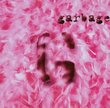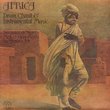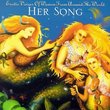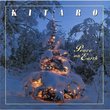| All Artists: Najma Title: Pukar Members Wishing: 0 Total Copies: 0 Label: Ark 21 Original Release Date: 1/1/2000 Re-Release Date: 3/7/2000 Genres: International Music, Jazz, Pop Styles: Far East & Asia, Middle East, Arabic, India & Pakistan, India Number of Discs: 1 SwapaCD Credits: 1 UPC: 618685000026 |
Search - Najma :: Pukar
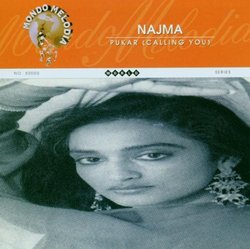 | Najma Pukar Genres: International Music, Jazz, Pop
Najma's swirling, romantic vocals once again wrap themselves around songs of yearning and passion in the Ghazal tradition of Pakistan, an ancient form of love poetry. Adeptly fusing a palette of tablas, sitars, light jazz,... more » |
Larger Image |
CD DetailsSynopsis
Amazon.com Najma's swirling, romantic vocals once again wrap themselves around songs of yearning and passion in the Ghazal tradition of Pakistan, an ancient form of love poetry. Adeptly fusing a palette of tablas, sitars, light jazz, and discreet new age synthesizers, it is nevertheless her startling voice that is the star of Pukar. Alternately soothing, incandescent, and flirtatious, she has virtually claimed the genre as her own with a mesmerizing vocal technique, natural and unforced, and always at the service of the material. Reinterpreting her art form for the 1990s, like fellow India-rooted chanteuse Shiela Chandra, Najma successfully brings her own musical heritage into the MTV spotlight without sacrificing its euphoric beauty. --Derek Rath Similarly Requested CDs
|
CD ReviewsA masterpiece work Walter Luis Bastos Doege | 04/02/2000 (5 out of 5 stars) "Najma Akhtar is one of the most important contemporary artists. The essence of her indescribable work is her voice and the accomplishment instrumentation: it's possible to hear a rare music - indian music and jazz! Some people would say light jazz. In despite of all I hear a sweet and strong singular female voice and jazz. It' possible to make music after Beethoven and Bach and it's very good. There is a mistery in her work. I think that Najma Akhtar follows Ravi Shankar." Pleasant enough...but Tempus Fugit | 01/13/2004 (4 out of 5 stars) "I preferred Najima on Forbidden Kiss, the tribute to S.D. Burman's Indian film songs. The Burman songs gave a bit more focus to the project, whereas Pukar is more of a collection of mood pieces that make for pleasant enough listening, but are not especially memorable. It works very well as background music on my PC at work. On the 7th track, "Baabul," she sings some of the lines in English, which lessens its impact. In this case, I feel like the music is being dumbed down a bit for western listeners, which is somewhat pointless. Either you go for this sort of thing or you don't. As I said in my review of Forbidden Kiss, Najima sings well but she won't make you forget Lata Mangeshkar, Asha Bhosle, or Chitra Singh." Najma's most lush release yet. Randy LeJeune | 07/25/1998 (5 out of 5 stars) "Pukar is the latest and best fusion of East Indian and Western jazz from this incredibly talented singer. It's got just enough western influence to make it stand up to modern music and recording standards without destroying the sincerity of the style of music. Even if you don't understand the language, you'll appreciate the feeling that comes through. Najma has an incredibly clear voice that is powerfull yet delicate. Her best effort yet."
|

 Track Listings (8) - Disc #1
Track Listings (8) - Disc #1